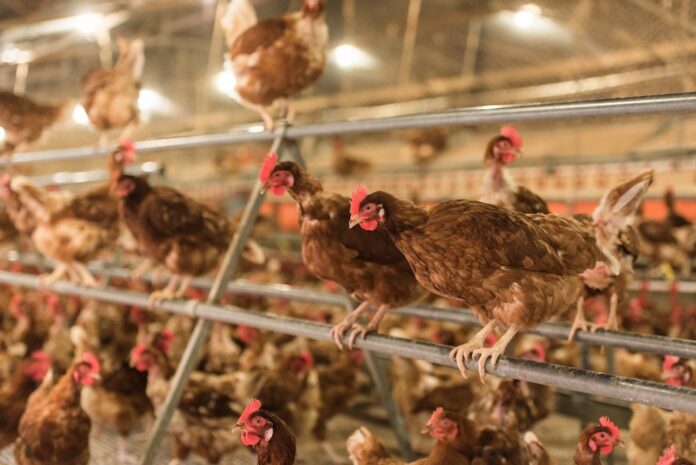
Avian chlamydiosis is a bacterial infection caused by Chlamydia bacteria. The currently available tests distinguish Chlamydia species based on genetic material. Researchers from Wageningen Bioveterinary Research (WBVR) developed a test based on antibodies present in animal blood that can determine which Chlamydia species infected the animal.
Chlamydia bacteria are gram-negative, intracellular bacteria. The bacterial genus currently consists of fourteen species, each with its own preferred host. A number of these species can not only cause disease in their preferred hosts, but also have zoonotic potential. The infamous zoonotic species Chlamydia psittaci has been found in hundreds of bird species, including poultry. This bacterium can cause a severe form of pneumonia in humans, known as parrot fever.
Differentiate between species
C. gallinacea and C. psittaci can infect birds, but both species differ in epidemiology and zoonotic potential. It is therefore important to have diagnostic tools which enable detection and distinction between the bacteria species in poultry. The available tests are based on molecular methods (DNA). These tests only provide information about the current infection status of animals, and work if there are enough bacteria in the samples taken.
A team of WBVR researchers led by Marloes Heijne and Fimme Jan van der Wal*, investigated whether it is possible to develop a test to detect antibodies against Chlamydia species in poultry. “Serology is suitable for monitoring flocks, as antibodies remain present for a long time after an infection,” explains Heijne. “At present, no differentiating test is available for Chlamydia serology.”
New test
To enable differentiating serology, a suspension array was designed, with peptides as antigens. These peptides are derived from known immunoreactive Chlamydia proteins. For the majority of these peptides, species-specific seroreactivity in mammalian sera has been described in the literature. For the suspension array, the peptides were immobilised on different coloured spheres, a mix of which was added to serum to capture the species-specific antibodies. “In fact, a serological suspension array is similar to an ELISA. However, using the array one can perform multiple ELISA’s for one sample simultaneously, in one reaction. For read-out of the assay we use dedicated equipment, a Luminex”, Heijne explains. With a number of additional measures, the test was made suitable for use in several animal species. “In our study, we showed that a number of peptides, which have been used in the literature as antigens for Chlamydia serology in mammals, also function in detecting and differentiating antibodies against the two for poultry important Chlamydia species.”
Conclusions
The suspension array can identify antibodies of four different Chlamydia species in mouse sera. The same test is also able to distinguish between antibodies of C. psittaci and C. gallinacea in chicken sera. Because the reactivity of chicken sera was not the same as that of mice, signals from chicken sera from the field were difficult to interpret. “Well-characterised chicken sera for evaluating the seroreactivity of the peptides are scarce. Nevertheless, results with field sera are consistent with published data on the occurrence of C. gallinacea in Dutch laying hens. With this, we have demonstrated the proof of concept of differentiating serology for antibodies against Chlamydia in poultry using peptides in a suspension array.”
* WBVR researcher Fimme Jan van der Wal is first author of the scientific publication, published in Veterinary Research (2023)54:31
Source: Wageningen University & Research

















